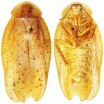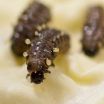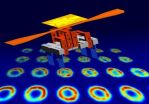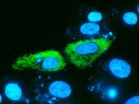(Press-News.org) A group of international ecological scientists led by the University of Adelaide have rejected a doomsday-like scenario of sudden, irreversible change to the Earth's ecology.
In a paper published today in the journal Trends in Ecology and Evolution, the scientists from Australia, US and UK argue that global-scale ecological tipping points are unlikely and that ecological change over large areas seem to follow a more gradual, smooth pattern.
This opposes recent efforts to define 'planetary tipping points' ‒ critical levels of biodiversity loss or land-use change that would have global effect ‒ with important implications for science and policy-makers.
"This is good news because it says that we might avoid the doom-and-gloom scenario of abrupt, irreversible change," says Professor Barry Brook, lead author of the paper and Director of Climate Science at the University of Adelaide. "A focus on planetary tipping points may both distract from the vast ecological transformations that have already occurred, and lead to unjustified fatalism about the catastrophic effects of tipping points.
"An emphasis on a point of no return is not particularly helpful for bringing about the conservation action we need. We must continue to seek to reduce our impacts on the global ecology without undue attention on trying to avoid arbitrary thresholds."
A tipping point occurs when an ecosystem attribute such as species abundance or carbon sequestration responds rapidly and possibly irreversibly to a human pressure like land-use change or climate change.
Many local and regional-level ecosystems, such as lakes and grasslands, are known to behave this way. A planetary tipping point, the authors suggest, could theoretically occur if ecosystems across Earth respond in similar ways to the same human pressures, or if there are strong connections between continents that allow for rapid diffusion of impacts across the planet.
"These criteria, however, are very unlikely to be met in the real world," says Professor Brook. "First, ecosystems on different continents are not strongly connected. Second, the responses of ecosystems to human pressures like climate change or land-use change depend on local circumstances and will therefore differ between localities."
The scientists examined four principal drivers of terrestrial ecosystem change ‒ climate change, land-use change, habitat fragmentation and biodiversity loss ‒ and found they were unlikely to induce global tipping points.
Co-author Associate Professor Erle Ellis, University of Maryland, Baltimore County, says: "As much as four fifths of the biosphere is today characterised by ecosystems that locally, over centuries and millennia, have undergone human-driven regime shifts of one or more kinds. Recognising this reality and seeking appropriate conservation efforts at local and regional levels might be a more fruitful way forward for ecology and global change science."
### END
Global tipping point not backed by science: Study
2013-02-28
ELSE PRESS RELEASES FROM THIS DATE:
The giant cockroach genus Pseudophoraspis expands to the north with 3 new species
2013-02-28
Cockroaches (Blattodea) are an insect order remarkable in their biodiversity and distribution, with more than 4500 species known and great geographical reach. Cockroach fossils date back around 400 million years, which testifies to their great adaptability and endurance that puts them among the planet's great survivors.
The cockroach genus Pseudophoraspism has has been reported from China for the first time thanks to the discovery of three new species: Pseudophoraspis clavellata, Pseudophoraspis recurvata and Pseudophoraspis incurvata, alongside the first regional record ...
Metal ions regulate terpenoid metabolism in insects
2013-02-28
This press release is available in German.
Max Planck scientists in Jena, Germany, have discovered an unusual regulation of enzymes that catalyze chain elongation in an important secondary metabolism, the terpenoid pathway. In the horseradish leaf beetle Phaedon cochleariae a single enzyme can trigger the production of two completely different substances depending on whether it is regulated by cobalt, manganese or magnesium ions: iridoids, which are defensive substances the larvae use to repel predators, or juvenile hormones, which control insect's development. Insects ...
Study led by NUS researchers proves the existence of 3 overstretched DNA structures
2013-02-28
A team of researchers led by Associate Professor Yan Jie from the Department of Physics at the National University of Singapore (NUS) Faculty of Science has identified three new distinct overstretched deoxyribonucleic acid (DNA) structures caused by mechanical stretching. This discovery provides a clear answer to a long-running debate among scientists over the nature of DNA overstretching.
Debate on Possible DNA Structural Transitions
Recent single-molecule studies revealed that mechanical stretching could induce transitions to elongated DNA structures. Three possible ...
Atoms with quantum memory
2013-02-28
This press release is available in German.
Ice cubes in a cocktail glass melt until an equilibrium state is reached in which the ice cubes are gone. After that, the geometric shape of the ice cubes is completely lost. The liquid does not contain any memory of their shape, the ordered ice crystal has turned into disordered water molecules. Ultra cold Bose-Einstein condensates behave differently; these highly ordered clouds of ultra cold particles also approach a disordered equilibrium state, but they retain some "memory" about their initial state for a remarkably long ...
Mayo Clinic finds steroids may shorten hospital stay for pneumonia patients
2013-02-28
ROCHESTER, Minn. — Patients with pneumonia may spend fewer days in the hospital if they are given steroids along with antibiotics and supportive care. That's the finding of a Mayo Clinic analysis of eight randomized-controlled clinical trials involving more than 1,100 patients. The results appear in the March issue of the Journal of Hospital Medicine.
"Given that the average hospital stay for community-acquired pneumonia can range from nine to 23 days, the prospect of speeding recovery, even by a day or two, is helpful," says co-author M. Rizwan Sohail, M.D., a Mayo infectious ...
'Crazy-busy' Canadians under pressure on the job
2013-02-28
Having more control in the workplace can have negative consequences for individuals but it depends on the form of job control, according to new research out of the University of Toronto.
Sociologist Scott Schieman measured a range of work conditions using data from a national survey of 6,004 Canadian workers. To measure levels of job pressure, he asked study participants questions such as: "How often do you feel overwhelmed by how much you had to do at work?" "How often do you have to work on too many tasks at the same time?" and "How often do the demands of your job ...
Discoveries suggest icy cosmic start for amino acids and DNA ingredients
2013-02-28
Using new technology at the telescope and in laboratories, researchers have discovered an important pair of prebiotic molecules in interstellar space. The discoveries indicate that some basic chemicals that are key steps on the way to life may have formed on dusty ice grains floating between the stars.
The scientists used the National Science Foundation's Green Bank Telescope (GBT) in West Virginia to study a giant cloud of gas some 25,000 light-years from Earth, near the center of our Milky Way Galaxy. The chemicals they found in that cloud include a molecule thought ...
Researchers show that lipid nanoparticles are ideal for delivering genes and drugs
2013-02-28
This press release is available in Spanish.
At the Faculty of Pharmacy of the Basque Public University (UPV/EHU) the Pharmacokinetics, Nanotechnology and Gene Therapy research team is using nanotechnology to develop new formulations that can be applied to drugs and gene therapy.Specifically, they are using nanoparticles todesignsystems for delivering genes and drugs; this helps to get the genes and drugs to the point of action so that they can produce the desired effect.
The research team has shown that lipid nanoparticles, which they have been working on for several ...
Creating your own animated 3D characters and scenes for the web
2013-02-28
It could be a grotto. Light is glowing up from below and gives the moving waves a glance of an opal under the sunlight. "This computer graphic was written with our new description language by a schoolboy in not more than two hours after a briefly reading of the instructions", explains Felix Klein, doctoral candidate at the chair of Computer Graphics at Saarland University. As Klein is moving three slide switches with the mouse which are placed under the wave graphic on the display, the water is transforming. Now, the waves are spreading circularly from the center point, ...
Mutation altering stability of surface molecule in acid enables H5N1 infection of mammals
2013-02-28
A single mutation in the H5N1 avian influenza virus that affects the pH at which the hemagglutinin surface protein is activated simultaneously reduces its capacity to infect ducks and enhances its capacity to grow in mice according to research published ahead of print today in the Journal of Virology.
"Knowing the factors and markers that govern the efficient growth of a virus in one host species, tissue, or cell culture versus another is of fundamental importance in viral infectious disease," says Charles J. Russell of St. Jude Children's Research Hospital, Memphis, ...





